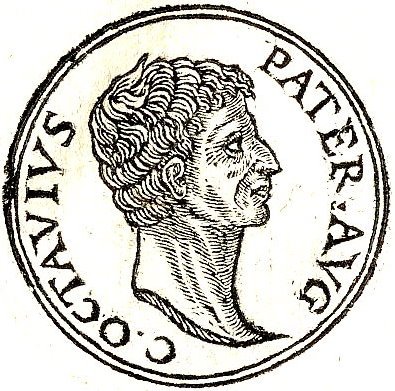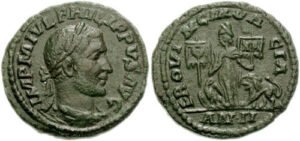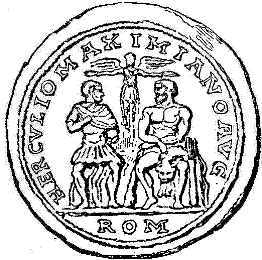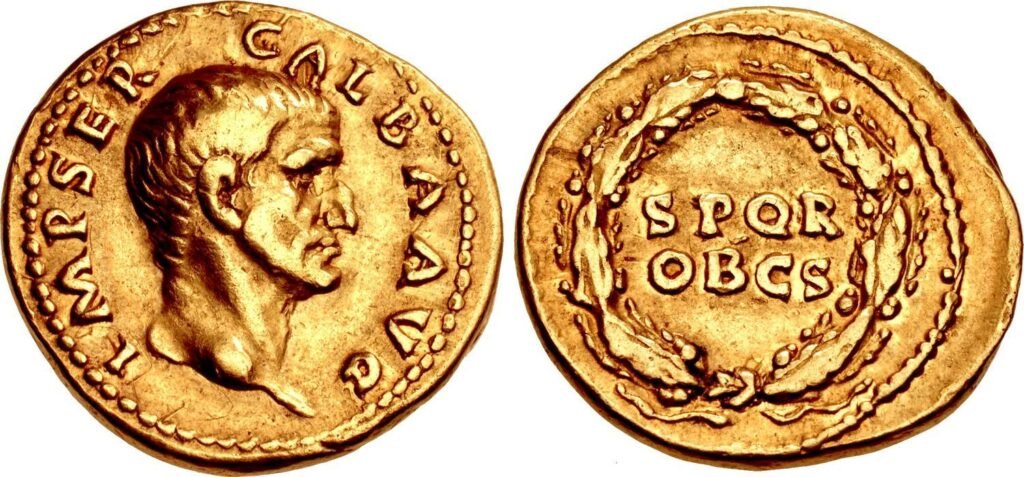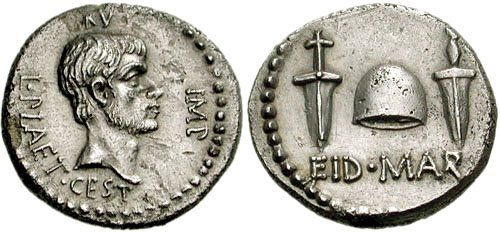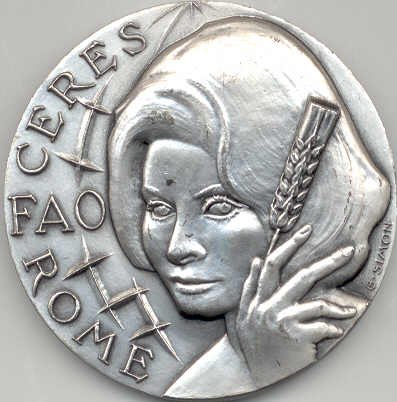How to Read and Date Ancient Roman Coins: A Step-by-Step Collector’s Guide
Meta Title:
Meta Description:
Introduction – From Mystery to Meaning
When a new collector holds their first ancient coin, they often whisper the same question:
“How do I even read this thing?”
It’s a fair question. A Roman coin might look chaotic — Latin abbreviations circling a crowned profile, mythic figures on the back, and cryptic marks below.
But once you learn to read it, you’ll see what seasoned numismatists see: a historical document.
Every Roman coin records a moment in time — the emperor’s name, his power titles, his victories, even the mint city where it was struck.
Learning to read and date them turns collecting into time travel.
💬 Each Roman coin is a page torn from the empire’s diary.
🪙 Step 1 – Start with the Obverse (Front)
The obverse almost always shows the emperor or empress. It tells you who issued the coin — and roughly when.
What to Look For
| Feature | Description | Tip |
|---|---|---|
| Portrait | Emperor facing right or left | Compare facial features with catalog images |
| Legend / Inscription | Imperial name and titles | Starts with “IMP,” “CAES,” or “DN” |
| Crown or Wreath | Laurel, radiate, or diademed head | Helps narrow period (e.g., radiate = 3rd century) |
| Bust Type | Draped, cuirassed (armored), or bare | Early emperors = simple; late emperors = elaborate |
Example:
IMP CAESAR NERVA TRAIAN AVG
= Emperor Nerva Trajan Augustus → Dates coin between AD 98–117.
💬 The obverse is the emperor’s introduction — name, rank, and divine claim.
🏛️ Step 2 – Examine the Reverse (Back)
The reverse reveals the empire’s message — victories, virtues, gods, or peace.
Common Reverse Themes
| Theme | Symbol | Meaning |
|---|---|---|
| Victory (VICTORIA AVG) | Winged goddess | Triumph in battle |
| Peace (PAX AVG) | Seated woman with olive branch | Restoration after war |
| Prosperity (FELICITAS) | Woman with caduceus or cornucopia | Abundance and fortune |
| Justice (AEQVITAS) | Scales and scepter | Fair rule |
| Faith (FIDES) | Hands clasped or holding standards | Loyalty of army or people |
Collector’s Tip: Reverse types changed frequently, often marking events like a military win or imperial anniversary — use them to narrow dating.
💬 If the obverse is who ruled, the reverse is what they wanted the world to believe.
✍️ Step 3 – Decode the Inscriptions
The key to dating Roman coins lies in their titles and abbreviations.
Common patterns include:
| Abbreviation | Meaning | Dating Clue |
|---|---|---|
| TR P (Tribunicia Potestas) | Tribunician Power | Renewed yearly – use RIC tables to date |
| COS (Consul) | Numbered office | COS III = 3rd term (year known) |
| IMP (Imperator) | Military commander | High numbers = late reign |
| PP (Pater Patriae) | “Father of the Nation” | Usually added later in reign |
| SC (Senatus Consulto) | “By Decree of Senate” | Found on bronzes from 1st–2nd century |
Example:
IMP TRAIANVS AVG GER DAC PM TRP COS VI PP
→ Indicates Trajan after his Dacian campaigns, c. AD 112–117.
🧩 Step 4 – Identify the Mint Mark
By the 3rd century AD, Roman coins often included mint marks, especially under the reform of Diocletian and Constantine.
| Mint Mark | Mint City | Notes |
|---|---|---|
| ROM / R / RM | Rome | Central Imperial Mint |
| ANT / ANTI | Antioch | Eastern Empire |
| LON / PLN | London | Provincial mint (Britannia) |
| AQ / AQPS | Aquileia | Northern Italy |
| CON / CONS | Constantinople | Post-AD 330 issues |
| SIS / SISCV | Siscia | Important Balkan mint |
| ARL / LUGD | Arles / Lyon | Western Empire mints |
Placement: Usually found in the exergue (the space below the reverse figure).
💬 Mint marks are Roman GPS — they pinpoint where your coin was born.
🏺 Step 5 – Date the Coin
Once you know the emperor and his titles, you can match them to his reign years.
Example:
-
Emperor: Hadrian
-
Inscription: TR P COS III
→ TR P (tribunician power renewed yearly), COS III (3rd consulship).
According to the Roman Imperial Coinage (RIC) catalogue, that corresponds to AD 119–122.
Resources for Dating
-
📘 RIC (Roman Imperial Coinage) series
-
📗 Seaby’s Roman Coins and Their Values by David R. Sear
-
🌐 Online: WildWinds, CoinArchives, OCRE (Online Coins of the Roman Empire)
🧠 Matching titles to years is the archaeologist’s trick for precise dating.
🔍 Step 6 – Use Metal and Denomination as Clues
The coin’s metal and size also help date it within a ruler’s reign:
| Metal | Denomination | Period | Avg. Size | Notes |
|---|---|---|---|---|
| Gold (Aureus) | High-value coin | Republic–3rd c. AD | 19–21 mm | Replaced by solidus after 300 AD |
| Silver (Denarius) | Standard Roman silver | 211 BC–250 AD | 17–20 mm | Gradually debased |
| Bronze (Sestertius) | Large bronze coin | 1st–3rd c. AD | 25–35 mm | Portrait detail excellent |
| Bronze (Follis / AE3) | Later empire | 300–450 AD | 18–25 mm | Mint marks common |
💬 Metal tells economy; size tells century.
📊 Step 7 – Cross-Reference Portrait Style
Artistic style evolves by era:
-
Early empire → realistic portraits (wrinkles, expression)
-
High empire → idealized (divine perfection)
-
Late empire → abstract, frontal busts (spiritual authority)
By comparing portrait style, you can confirm the century even if inscriptions are worn.
🎨 Every emperor’s face reflects the politics of his time.
⚖️ Step 8 – Verify Authenticity and Condition
Before finalizing any identification:
-
Compare lettering with RIC or WildWinds entries.
-
Look for style mismatches (wrong bust + wrong inscription).
-
Check weight and diameter — fakes often deviate by ±10%.
Pro Tip:
Graded coins from NGC Ancients include the emperor’s full name, reign years, and mint attribution — an ideal learning tool for new collectors.
💰 Real Examples from Collections
| Coin | Reading | Date | Notes |
|---|---|---|---|
| Denarius of Tiberius (“Tribute Penny”) | TI CAESAR DIVI AVG F AVGVSTVS | AD 14–37 | Iconic biblical coin |
| Aureus of Nero | NERO CLAVD CAESAR AVG GER P M TR P IMP P P | AD 64–68 | Minted during great fire of Rome |
| Antoninianus of Gallienus | GALLIENVS AVG / SOLI INVICTO | AD 260–268 | Features the sun god Sol |
| Follis of Constantine I | DN CONSTANTINVS PF AVG / SOLI INVICTO COMITI | AD 313–315 | Early Christian-era crossover |
🔗 Internal NumisDon Connections
-
Roman Coin Symbols and Their Meanings
-
Roman Coin Inscriptions and Abbreviations
-
How to Identify and Authenticate Ancient Coins
-
Roman Coin Values: A Collector’s Guide
💬 FAQs – Reading and Dating Roman Coins
Q1. How do I start reading Roman coins as a beginner?
Begin with the obverse. Identify the emperor’s name and titles — that’s your foundation.
Q2. What’s the fastest way to date a Roman coin?
Match the emperor’s titles (TRP, COS, IMP) to reign years in RIC.
Q3. Are all inscriptions in Latin?
Mostly, yes — though Greek appears in eastern provinces.
Q4. Can worn coins still be dated?
Yes, by comparing portrait style, reverse type, and metal denomination.
Q5. What tools help identify coins?
A magnifying glass (×10), digital scale, caliper, and RIC or WildWinds database.
🏺 Conclusion – Reading Time in Silver and Bronze
Once you learn to read and date Roman coins, you realize they’re more than artifacts — they’re time stamps.
Each mark, from IMP to SC, anchors the coin in a precise moment of Roman history.
To read one is to walk through time — not as an observer, but as a participant holding the past in your palm.
💬 A true collector doesn’t just own coins — they read history in metal.
Author: Dr. Elena Voss – Roman Numismatics & Archaeological Dating Expert
